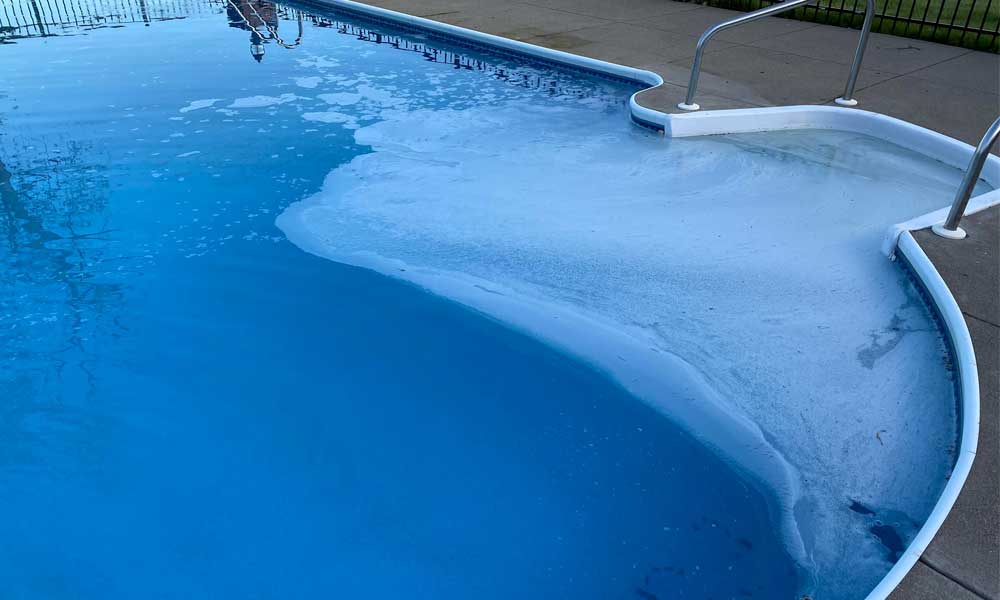Algaecides are chemical substances used to control or prevent the growth of algae in swimming pools. The presence of foam when using algaecide in a pool can be due to several factors:
Surfactants: Some algaecides contain surfactants or foaming agents as part of their formulation. Surfactants are substances that lower the surface tension of water, allowing bubbles to form more easily and resulting in foam. These surfactants can cause the algaecide solution to foam when it comes into contact with water and air.
Agitation: Agitating the water by brushing the pool walls, using pool equipment, or even swimmers splashing around can introduce air into the water. When air is mixed with the algaecide solution, it can lead to foam formation.
Water Chemistry: The chemical composition of the pool water can also influence the likelihood of foaming. If the pH, alkalinity, or calcium hardness levels are not within the recommended range, it could contribute to foaming when using algaecides.
Residue: Sometimes, leftover cleaning products, soaps, lotions, or other contaminants on swimmers’ bodies can end up in the pool water. When these substances interact with the algaecide, they can contribute to foaming.
Overdosing: Using too much algaecide or not diluting it properly according to the manufacturer’s instructions can also lead to foaming. Excessive algaecide can cause an imbalance in the pool’s chemistry and result in foam formation.
If you’re experiencing excessive foaming after adding algaecide to your pool, here’s what you can do:
Wait it Out: In many cases, the foam will eventually dissipate on its own as the chemicals disperse and the pool water is circulated.
Adjust Water Chemistry: Check and adjust the pH, alkalinity, and calcium hardness levels of the pool water if needed. Proper water balance can help reduce the likelihood of foaming.
Reduce Agitation: Minimize any activities that introduce air into the water, such as aggressive brushing or splashing.
Use the Right Amount: Ensure that you’re using the correct amount of algaecide as recommended by the manufacturer. Follow the instructions carefully.
Clarifiers: If the foam persists, you can use a pool clarifier to help break down the foam and improve water clarity.
If the foam issue persists or worsens, consider seeking advice from a pool professional who can assess the situation and provide appropriate guidance.
Post time: Aug-28-2023


